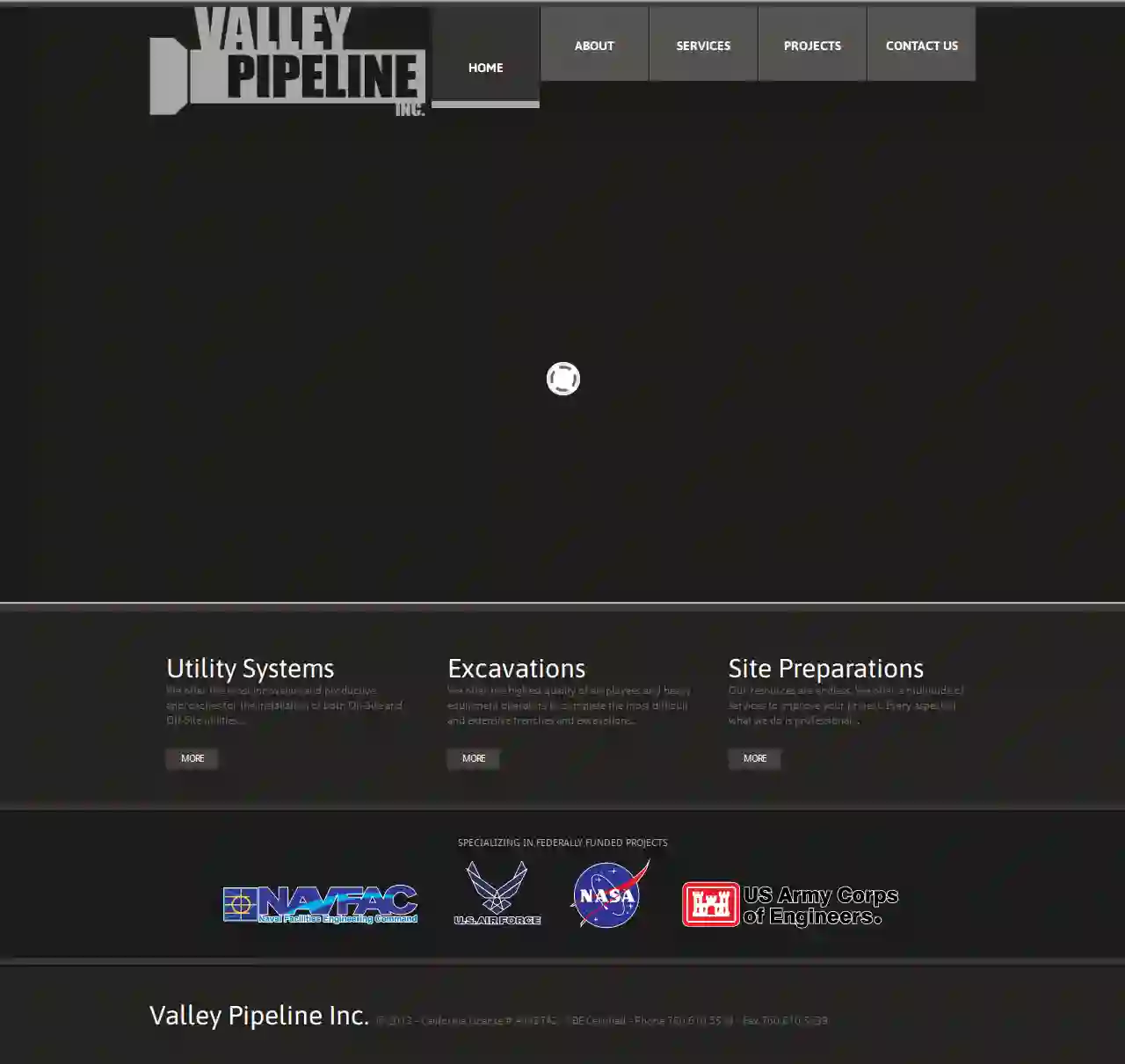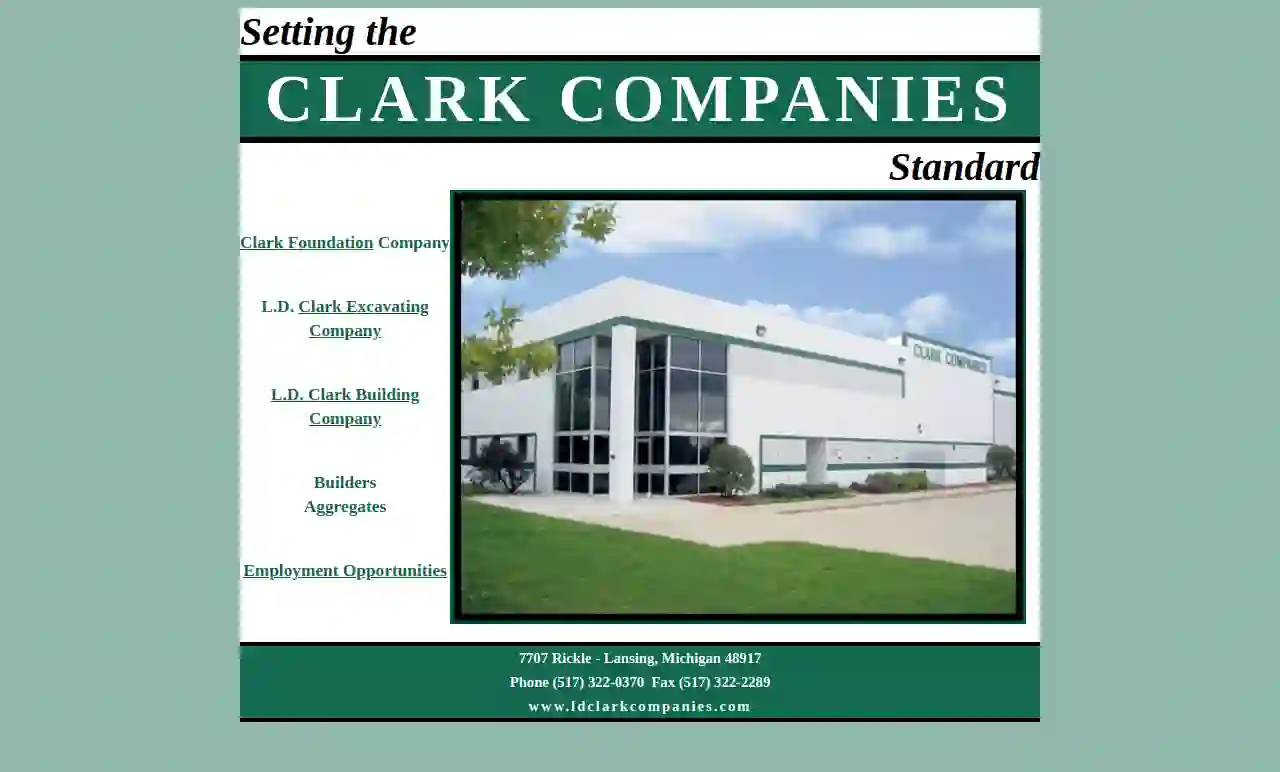Excavation Contractors Ludington
Best Trenching Services in Ludington
Get 3 FREE Excavation Contractors Near Me quotes for your project today! Compare profiles, reviews, accreditations, portfolio, etc... and choose the best offer.

MHernandez Grading, Inc.
Indio, CA, 92201, USM. Hernandez Grading, Inc. We are your top local excavating team. You can always rely on our company for precise work and dedicated customer service. Our excavation company works with top of the line equipment to get the job done right, on time, and within budget. When you need to get your project kicked off fast our team of qualified experts is there with superior excavation contracting, land grading, and lot clearing. High Quality Results We take pride in offering high quality results, using the finest equipment, and keeping our work areas clean and safe at all times. Clean and Safe at All Times We take pride in offering high quality results, using the finest equipment, and keeping our work areas clean and safe at all times. In Business Since 2008 M Hernandez Grading Inc. is excited to provide expert services to the valley. We are locally owned and operated for prompt response to your needs. Our professional staff is ready to take care of your grading and excavation needs. We are proud to be locally owned and operated. Call on us today! Why Choose Us M Hernandez Grading, Inc. has years of experience organizing large scale projects, and we take pride in offering high quality results, using the finest equipment, and keeping our work areas clean and safe at all times. Schedule us today for any type of deep excavation, excavating service, and grading service. Our Mission We believe in providing the best quality We believe in good customer relationships We believe in using the latest methods and techniques
- Services
- Why Us?
- Gallery
Get Quote
Premier Groundworks LLC
4.610 reviewsSouthfield, Michigan, USPremier Groundworks LLC Your trusted excavating contractor, hardscape installer, pond builder, and more! Call today to see what we can do for you. Serving all of Southeast Michigan. Premier Groundworks LLC offers beautiful commercial landscape design and other property maintenance and construction services throughout the Southeastern Michigan area. As a creative and professional commercial service, we handle build projects that include all aspects of industrial and commercial landscaping design, construction, plant installation, snow plowing, excavating and more. The commercial landscaping design experts at Premier Groundworks offer design and build services for many properties including: Residential community/Subdivision developments Parks and community centers Retail and office centers Health care facilities Religious organizations and institutions Municipalities Colleges and universities Small business complexes and many more. Commercial Excavating & Land Sculpting Premier Groundworks is a one-stop design-build company, specializing in sustainable and practical landscaping for commercial and residential projects. No matter the scope of excavating, or the property sculpting needs you require, Premier Groundworks can handle the task. We have the capabilities, experience, and creativity to exceed your expectations. Professional Commercial Landscaping Premier Groundworks plans and provides for successful completion of your commercial landscaping project through site analysis, budget proposals, and implementation. This is an essential key to a successful project.
- Services
- Why Us?
- Gallery
Get Quote
Delta Excavation And Demolition
51 reviews10000 County Rd 12, 10000 County Rd 12, Kitchener, N0L 1M0, USDelta Excavation & Demolition: Your Trusted Partner for All Your Excavation and Demolition Needs Delta Excavation & Demolition is a reputable and experienced company specializing in a wide range of excavation and demolition services. We are committed to providing our clients with high-quality workmanship, exceptional customer service, and competitive pricing. Our team of skilled professionals is dedicated to delivering projects on time and within budget, while adhering to the highest safety standards. We understand that excavation and demolition projects can be complex and require careful planning and execution. That's why we take a collaborative approach, working closely with our clients to ensure their needs are met and their expectations are exceeded. From site preparation to final cleanup, we handle every aspect of the project with precision and expertise. Whether you're building a new home, expanding your business, or demolishing an existing structure, Delta Excavation & Demolition is your trusted partner. We have the experience, equipment, and commitment to deliver exceptional results. Contact us today for a free consultation and let us help you bring your project to life.
- Services
- Why Us?
- Testimonials
Get Quote
Dirt World
4.232 reviews14370 Seaway Road, Gulfport, USAbout Us Since 2007 Dirt World has been the number one provider of soil, rocks, gravel, crushed concrete, crushed asphalt, wash out, sand and mulch. These items are sold by the cubic yard loaded on to your truck or trailer, or can be delivered by one of our trucks. All materials are available for pick up or delivery. We also offer installation and spreading of these material, and also offer a wide variety of land services including land clearing, bush hogging, excavator and bulldozer work, drive way repair and building, demolition and many other services.
- Services
- Why Us?
- Gallery
Get Quote
VALLEY PIPELINE INC.
3.76 reviews73161 Fred Waring Dr Suite 200, Palm Desert, 92260, USValley Pipeline Inc. is a leading underground utility contractor specializing in both wet and dry utilities. We are committed to providing our clients with the highest quality services and exceeding their expectations for safety, quality, functionality, and timely completion. Our team of experienced professionals is dedicated to delivering innovative and productive solutions for all your utility needs. We have a proven track record of success in a wide range of projects, including: Sewer and Water Tie-Ins Underground Storm Water Retention Fire Protection Systems Certified Welding Cast In Place Structures SoCal Gas Certified Contractor Above and Below Ground Hydronics systems Utility Systems Excavations Site Preparations We are proud to be a trusted partner for both public and private sector clients, specializing in federally funded projects. Our commitment to safety is paramount, and we are fully accredited and insured. We are also dedicated to environmental responsibility and adhere to all applicable regulations. At Valley Pipeline Inc., we believe in building strong relationships with our clients and employees. We treat everyone with respect, take responsibility for our actions, and value the relationships we build. We are committed to providing a safe and rewarding work environment for our employees, and we are always looking for talented individuals to join our team.
- Services
- Why Us?
- Our Team
- Gallery
Get Quote
Exclusive Excavating
51 reviewsLansing, USAbout Us Exclusive Excavating has over 30 years of experience serving as an excavating contractor in Metro Detroit and the surrounding areas. Years of dedication and experience have led to the development of superior skills and knowledge in the field. Our company is dedicated to realizing your needs. Contact us to schedule a free consultation and estimate today.
- Services
- Why Us?
- Gallery
Get Quote
Pater Bobcat Services Inc
4.317 reviews3613 24th Ave SW, Grandville, 49418, USGrand Rapids Excavation Services Trust the fully licensed and insured experts at Pater Bobcat Services to help your project get off to a great start with our proven excavation services. From complex installations and additions to minor touch ups, we offer all the excavation services you’ll need for your next project. Since 1999, commercial and residential contractors throughout West Michigan have trusted Pater Bobcat Services’ wide range of expertise. From concrete and asphalt pavement removal and prep to catch basin repairs and replacement, to pool demolition or materials delivery, Pater Bobcat Services will complete your project on time and on budget. Our team believes communication remains key when it comes to providing quality results. Trust our experienced professionals to stay in touch with you every step of the way as we implement your needs and pay attention to those little details that make a good project great. From your initial vision to a spotless site post-project, our team will dedicate their time to helping you achieve your project goals while caring for your property as if it was their own. In addition to a hardworking team, we believe it’s important to have quality materials for a project to be successful. From crushed concrete, screened and unscreened topsoil, stone, sand, bark and mulch, we offer a wide range of materials that can help you with just about any job, big or small. For more information about excavation services from the experts at Pater Bobcat Services, please contact us here or call us directly at 616.896.9778.
- Services
- Why Us?
- Testimonials
- Gallery
Get Quote
L D Clark Excavating Co
4.33 reviews7707 Rickle, Lansing, 48917, USL.D. Clark Companies: Building Your Future L.D. Clark Companies is a family-owned and operated business with a rich history spanning over 40 years. Founded in 1975 by Larry Clark, our company has grown into a trusted name in the Lansing, Michigan area, known for its commitment to quality, integrity, and customer satisfaction. Our Mission Our mission is to provide our clients with exceptional construction services, exceeding expectations with every project. We strive to build lasting relationships with our customers, earning their trust through our dedication to excellence and unwavering commitment to their vision. Our Services L.D. Clark Companies offers a comprehensive range of construction services, including: Excavating Grading Trucking Foundation Building Aggregates Our Team Our team is comprised of experienced and dedicated professionals who are passionate about their craft. We believe in fostering a collaborative environment where every team member contributes to the success of each project. Our commitment to continuous learning and professional development ensures that our team remains at the forefront of industry best practices. Our Experience L.D. Clark Companies has a proven track record of delivering successful projects for both residential and commercial clients. We have a deep understanding of the local market and are committed to providing our clients with the highest quality construction services at competitive prices.
- Services
- Why Us?
- Testimonials
- Gallery
Get Quote
BJ’s Service Group, Inc
514 reviews137 J J Holcomb Rd, Picayune, 39466, USWelcome to BJ’s Service Group Quality Construction. Honest Service. Great Value. BJ’s Service Group began as just an idea in early 2015. Cortney and Adam Bowers have turned that dream into a construction and service company capable of servicing the needs of contractors and customers in the Gulf Coast Region. BJ’S Service Group is State Certified with yearly inspections. We pride ourselves on providing safe, professional, and timely service. Our Operators attend yearly training classes and regular safety meetings to make sure we are providing the best experience and service to our customers. Learn More Get Services
- Services
- Why Us?
- Testimonials
- Gallery
Get Quote
Dan Hoe Excavating Inc
52 reviews13664 Rocky�s Road, Holland, 49424, USDan Hoe Excavating, Inc. - Your Trusted Partner for Excavation, Dredging, Demolition, and Recycling in West Michigan Dan Hoe Excavating, Inc. is a family-owned and operated business with over 30 years of experience serving the Lakeshore area of West Michigan. We are committed to providing the highest standards of customer service and quality workmanship, accomplished with integrity, effective communication, dependability, innovative ideas, and respect for our customers. Our team is dedicated to delivering exceptional results on every project, no matter the size. We have a comprehensive range of equipment and expertise to handle a wide variety of projects, including: Dredging Recycling Excavating Demolition We are proud to have a long history of working with a diverse range of clients, including: Black River Public Schools City of Holland City of Muskegon City of Zeeland Elzinga & Volkers GDK Construction Co. Gentex, Inc. Holland Charter Township Holland Hospital Lakewood, Inc. Lamar Construction Michigan City Port Authority Michigan Department of Transportation Montcalm County Drain Commission Ottawa County Drain Commission Ottawa County Road Commission Owen Ames Kimball Skanska USA Building, Inc. Triangle Association West Ottawa Public Schools Zeeland Charter Township Zeeland Community Hospital Zeeland Public Schools We are also a proud member of the Michigan Infrastructure & Transportation Association. Contact us today to discuss your project needs. We look forward to working with you!
- Services
- Why Us?
- Accreditations
- Gallery
Get Quote
Over 22,076+ Excavation Companies on our platform
Our excavation companies operate in Ludington and surrounding areas!
ExcavationHQ has curated and vetted Top Excavation Contractors in Ludington. Find a trustworthy pro today.
Frequently Asked Questions About Excavation Contractors
- Spring and Fall: Often considered favorable due to moderate temperatures and drier soil conditions.
- Summer: Can be suitable, but hot weather can make working conditions challenging and might require additional measures (shade, hydration) for workers.
- Winter: Excavation in winter can be more difficult due to frozen ground, snow, and potential delays caused by inclement weather. It might also require specialized equipment or techniques.
- Excavations Deeper Than a Certain Depth: This varies by jurisdiction, usually around 5 feet.
- Excavations Near Utilities: Digging near buried utilities (gas, water, electric) often requires permits and utility locates to prevent damage.
- Excavations Affecting Public Property: Projects impacting sidewalks, roads, or other public areas typically require permits.
- Excavations in Environmentally Sensitive Areas: Projects in wetlands, floodplains, or other sensitive areas might need special permits.
- New Construction: Laying foundations, basements, or underground utilities for new buildings.
- Home Additions: Creating space for new rooms, basements, or extensions.
- Landscaping: Leveling ground, creating slopes, installing retaining walls, or digging for ponds or pools.
- Drainage Improvement: Installing French drains, drainage ditches, or swales to manage water runoff.
- Utility Installation or Repair: Laying new water, sewer, gas, or electrical lines, or repairing existing ones.
- Demolition: Clearing debris and preparing the site after demolishing a structure.
- Clearly Define the Scope: Outline the project's goals, including the excavation area, depth, grade, and intended use.
- Obtain Necessary Permits: Research and acquire any required permits from your local authorities.
- Mark Utility Lines: Contact your utility companies to locate and mark underground utilities to prevent damage.
- Communicate with Neighbors: Inform your neighbors about the project's timeline and potential noise or disruptions.
- Prepare the Site: Clear any obstacles, such as vegetation, furniture, or structures, from the excavation area.
- Discuss Safety Protocols: Review safety procedures with the contractor to ensure a safe work environment.
What is the best time of year for excavation?
Do I need a permit for excavation?
How do I know if I need excavation for my project?
What should I do before excavation starts?
What is the best time of year for excavation?
- Spring and Fall: Often considered favorable due to moderate temperatures and drier soil conditions.
- Summer: Can be suitable, but hot weather can make working conditions challenging and might require additional measures (shade, hydration) for workers.
- Winter: Excavation in winter can be more difficult due to frozen ground, snow, and potential delays caused by inclement weather. It might also require specialized equipment or techniques.
Do I need a permit for excavation?
- Excavations Deeper Than a Certain Depth: This varies by jurisdiction, usually around 5 feet.
- Excavations Near Utilities: Digging near buried utilities (gas, water, electric) often requires permits and utility locates to prevent damage.
- Excavations Affecting Public Property: Projects impacting sidewalks, roads, or other public areas typically require permits.
- Excavations in Environmentally Sensitive Areas: Projects in wetlands, floodplains, or other sensitive areas might need special permits.
How do I know if I need excavation for my project?
- New Construction: Laying foundations, basements, or underground utilities for new buildings.
- Home Additions: Creating space for new rooms, basements, or extensions.
- Landscaping: Leveling ground, creating slopes, installing retaining walls, or digging for ponds or pools.
- Drainage Improvement: Installing French drains, drainage ditches, or swales to manage water runoff.
- Utility Installation or Repair: Laying new water, sewer, gas, or electrical lines, or repairing existing ones.
- Demolition: Clearing debris and preparing the site after demolishing a structure.
What should I do before excavation starts?
- Clearly Define the Scope: Outline the project's goals, including the excavation area, depth, grade, and intended use.
- Obtain Necessary Permits: Research and acquire any required permits from your local authorities.
- Mark Utility Lines: Contact your utility companies to locate and mark underground utilities to prevent damage.
- Communicate with Neighbors: Inform your neighbors about the project's timeline and potential noise or disruptions.
- Prepare the Site: Clear any obstacles, such as vegetation, furniture, or structures, from the excavation area.
- Discuss Safety Protocols: Review safety procedures with the contractor to ensure a safe work environment.